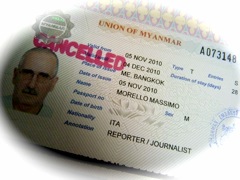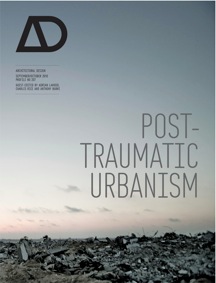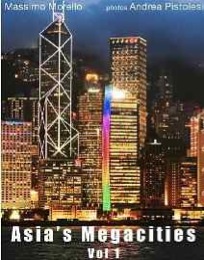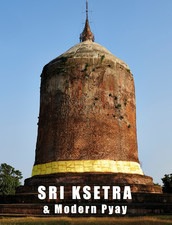Nov 2010
The risk of the Icon
18/11/10 12:11 Filed in: South-East Asia
 Aung San Suu Kyi is finally free. The hard work starts now. All scenarios are possible. Perhaps the military junta really has started on the road to democracy after all. It’s a hope we can’t help but have, for ethical if not political reasons. But it’s a hope that soon fades. You only have to read the clear, concise analysis of Bertil Lintner, one of the most acute observers of Burmese affairs, published in the New York Times.
Aung San Suu Kyi is finally free. The hard work starts now. All scenarios are possible. Perhaps the military junta really has started on the road to democracy after all. It’s a hope we can’t help but have, for ethical if not political reasons. But it’s a hope that soon fades. You only have to read the clear, concise analysis of Bertil Lintner, one of the most acute observers of Burmese affairs, published in the New York Times.For now the Burmese government seems to have reached an important objective on the road to legitimation. Another important target is to be able to play on different tables. Not only with China, Russia, India and Asean, but also with the United States and the European Union. It’s also an excellent result for the multinationals that do business with the Burmese military. Now they look a little less tainted.
Much depends on the lady herself. She now has to put her political and diplomatic skills to the test. Some are already bringing them into doubt. As though the courage, dignity and moral strength she has shown in the last twenty years were no longer sufficient. The symbol remains such only if under house arrest.
Let’s give her the time she needs. And hope the generals do the same. And this can only be done if international politics is committed to this situation and recognises her as their interlocutor.
These analyses have to be done calmly and clinically. Otherwise the opportunity may turn into a limitation. The risk being the “Tibetization” of Burma. Or rather its opposition. Which could be want the generals are aiming for. “This is not an ordinary military dictatorship we are talking about,” said Bertil Lintner. “This is a military that has become expert at staying in power.” The risk is that Aung San Suu Kyi ends up being just another “icon” used on T-shirts or in rock songs, a mere marketing tool. A female Che Guevara, peaceful and wearing flowers in her hair. A sort of layman’s saint comparable to Mandela, Gandhi or the Dalai Lama, with no analysis of the differences in context, history, strategy and geopolitics.
The risk is that Burma will be remembered only when peace protests or mega-concerts are held.
0 Comments
A sense of honour
15/11/10 12:22 Filed in: Logbook
“You have not been a man of honour”, says the Burmese consulate official in Bangkok as he hands me back my passport.
This is the explanation I get for having my visa denied. Well, not denied outright, because, with a bizarre sense of irony, first they stuck the visa sticker into my passport and wrote ‘journalist’ on it, then they stamped ‘Cancelled’ on top.
In truth, I wasn’t completely honest with them: in the visa application I lied about my profession, but not about my motives. I said I wanted to go to Rangoon because it seemed an interesting time to go there.
All I told the official was something about him not being the best person to speak about honour.
They have granted me a visa in the past. It was almost like a game. I lied and they pretended to believe me. Evidently, this time, after the “election”, they don’t want too many witnesses.

Anatomy of a sham election
“Anatomy of a sham election” is the title of an article by Patrick Winn published on the Global Post website. Anatomy is the perfect term. It’s used when talking about a dead body. It's reserved for the mortuary, when the body lies cold on the slab, not for when it lies bleeding and beaten in the street, when some vague hope of recovery still lingers.
This is what has happened. Now, at this late stage, the whole of the West discovers that the Burmese election was a farce. The opposition party – the one opposed to the boycott called for by Aung San Suu Kyi – asks for an annulment. Before, they had come up with nothing except talk of the lesser evil, the only possibility, the lack of alternatives. In a certain sense, the governments of Asia and China have been more straightforward, sticking to their original judgement that the election is a “step forward”.
The best comment came from Tim Heinemann, a retired US Army colonel and head of Worldwide Impact Now, an NGO that assists oppressed peoples. “The election was like putting the facade of a church on a whorehouse».
This is the explanation I get for having my visa denied. Well, not denied outright, because, with a bizarre sense of irony, first they stuck the visa sticker into my passport and wrote ‘journalist’ on it, then they stamped ‘Cancelled’ on top.
In truth, I wasn’t completely honest with them: in the visa application I lied about my profession, but not about my motives. I said I wanted to go to Rangoon because it seemed an interesting time to go there.
All I told the official was something about him not being the best person to speak about honour.
They have granted me a visa in the past. It was almost like a game. I lied and they pretended to believe me. Evidently, this time, after the “election”, they don’t want too many witnesses.

Anatomy of a sham election
“Anatomy of a sham election” is the title of an article by Patrick Winn published on the Global Post website. Anatomy is the perfect term. It’s used when talking about a dead body. It's reserved for the mortuary, when the body lies cold on the slab, not for when it lies bleeding and beaten in the street, when some vague hope of recovery still lingers.
This is what has happened. Now, at this late stage, the whole of the West discovers that the Burmese election was a farce. The opposition party – the one opposed to the boycott called for by Aung San Suu Kyi – asks for an annulment. Before, they had come up with nothing except talk of the lesser evil, the only possibility, the lack of alternatives. In a certain sense, the governments of Asia and China have been more straightforward, sticking to their original judgement that the election is a “step forward”.
The best comment came from Tim Heinemann, a retired US Army colonel and head of Worldwide Impact Now, an NGO that assists oppressed peoples. “The election was like putting the facade of a church on a whorehouse».
Cities of the Apocalypse
03/11/10 05:33 Filed in: Dispatches
Traumatized cities, blighted by war, terrorism, demolished and bombed out buildings, tsunamis, tornados, typhoons, earthquakes, and floods feature increasingly often in our daily news. These urban spaces bear the marks and scars of the disasters that have befallen them. How can the effects of trauma be understood in urban terms? What can architecture do for a planet at war with itself? A new book analyses the consequences of trauma on cities, communities and cultures. Post-Traumatic Urbanism – published in the Profiles series of Architectural Design Magazine by the University of Technology Sydney, and edited by Adrian Lahoud, Charles Rice and Anthony Burke – explores the response of architects and urban planners to these catastrophic events.

As essential as the emergency operations and reconstruction are, architects must have a more in-depth understanding of the effects of trauma on cities and their inhabitants. Should they restore and retrieve what has been lost or should they see post-traumatic cities as a blank slate from which a new city can emerge?
Post-trauma is no longer the exception to the rule. It is the way of the world today.
In the Stories section you will find an excerpt from the introduction by Adrian Lahoud, architect, urban planner and researcher. It’s a brief, complex and abstract text. But it is from this cool and clinical distance that the aftermath of trauma can be seen more clearly. The assumption being that observation implies a consequent action.

As essential as the emergency operations and reconstruction are, architects must have a more in-depth understanding of the effects of trauma on cities and their inhabitants. Should they restore and retrieve what has been lost or should they see post-traumatic cities as a blank slate from which a new city can emerge?
Post-trauma is no longer the exception to the rule. It is the way of the world today.
In the Stories section you will find an excerpt from the introduction by Adrian Lahoud, architect, urban planner and researcher. It’s a brief, complex and abstract text. But it is from this cool and clinical distance that the aftermath of trauma can be seen more clearly. The assumption being that observation implies a consequent action.





